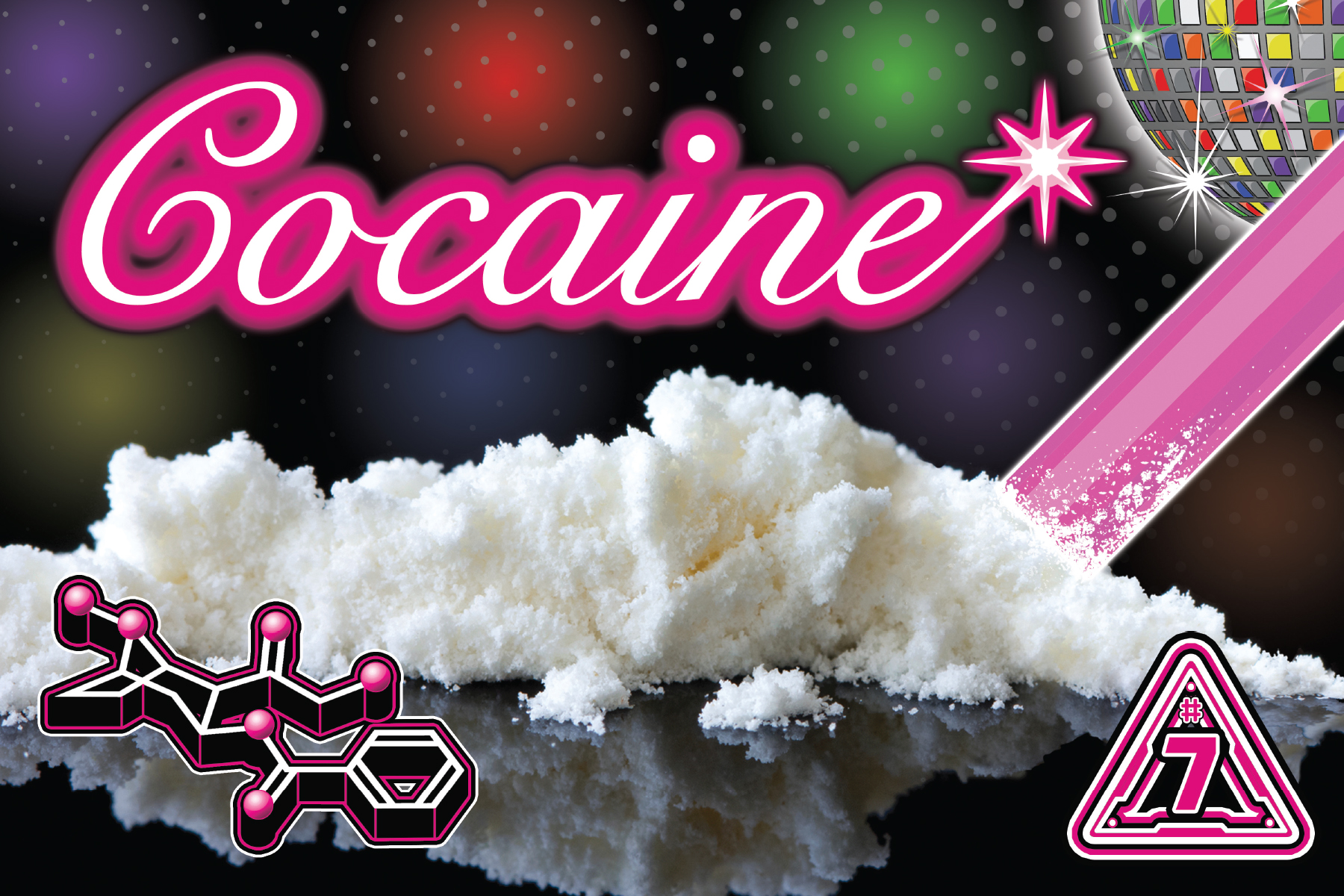
Cocaine
Post Date: February 10, 2014
Rachel Clark2023-03-28T16:19:04-07:00
Cocaine
What is cocaine?
- Cocaine is a bitter, numbing powder derived from the leaves of the coca plant, which mainly grows in South America.
- The leaves of the coca plant can be chewed or made into tea. Coca leaves are used this way legally in many countries as a mild stimulant similar to caffeine.
- Until 1929, Coca-Cola contained cocaine (hence the name) and so did many other over-the-counter food and medicine products.
- Cocaine is used in medicine today as a local anesthetic (numbing agent).
- Crack cocaine is made by heating baking soda with cocaine to make smokeable “rocks.” Crack is, for all intents and purposes, smokeable cocaine.
What are the effects?
- Users generally report feelings of confidence, alertness, talkativeness, and euphoria.
- Cocaine is a stimulant drug with subjective effects similar to amphetamines, but much shorter acting.
- Most often powder cocaine is snorted in bumps or small lines. The effects come on within minutes and peak after about 15-30 minutes, with a total duration of about 30-60 minutes.
- When injected, the effects are substantially more intense than snorting and come on in seconds.
- When smoked in the form of “crack,” the effects come on in seconds and are much stronger than snorting, but wear off within minutes. This can lead to compulsive redosing.
- Cocaine hydrochloride (powder cocaine) can’t be smoked effectively, which is why it has to be converted into crack to produce this more substantial rush.
What is a typical dose?
- A typical snorted dose is between 30 to 70 mg.
- A typical smoked dose of crack is between 15 to 50 mg.
- Due to the short duration of action of cocaine in both hydrochloride (powder) and crack form, it’s typical for consumers to build tolerance and require higher doses over a session (acutely) or over time (chronically).
- Cocaine can also be taken orally to reduce strain on the nasal cavities, although this is less common.
Be careful!
- The risk of cardiovascular injury with cocaine is significantly higher than other stimulants. High or frequent doses of cocaine can damage the heart and blood vessels, causing strokes, aneurysms, and heart attacks. Some people have sudden cardiovascular side effects when using cocaine at lower doses.
- Cocaine causes a sudden increase in heart rate, blood pressure, and body temperature. Combining cocaine with exertion and/or other stimulants may cause overheating, arrhythmia (uneven heartbeat), and hypertension.
- Cocaine is very short-acting, and the after-effects (the “comedown”) can be quite unpleasant. This is worsened by higher or more frequent doses, or more potent routes of administration like smoking and injecting. The comedown often leads to compulsive redosing.
- Like any drug, it’s possible to use cocaine compulsively and develop a problematic relationship with it. It may be a good idea to take a break if you find yourself regularly using cocaine as a coping mechanism, or feeling very anxious at the thought of going without it for a period of time. It is strongly recommended to use cocaine in moderation and avoid daily use.
More harm reduction tips
- Repeated snorting can damage nasal cavities and sinuses. To reduce risks, use saline spray before, during, and after any snorting session.
- Use of cocaine or any other stimulant can lead to insomnia and sleep deprivation. Staying awake for two or more days dramatically increases anyone’s risk of entering into a psychotic state.
- Sharing snorting devices can spread Hepatitis C and other diseases. Rolled up Post-It notes and personal straws can be used as disposable snorting devices.
- While crack is (very literally) just cocaine that you can smoke, this route of administration produces a much more intense high because smoking is inherently a faster and more potent rush than snorting, increasing the risk of compulsive redosing.

